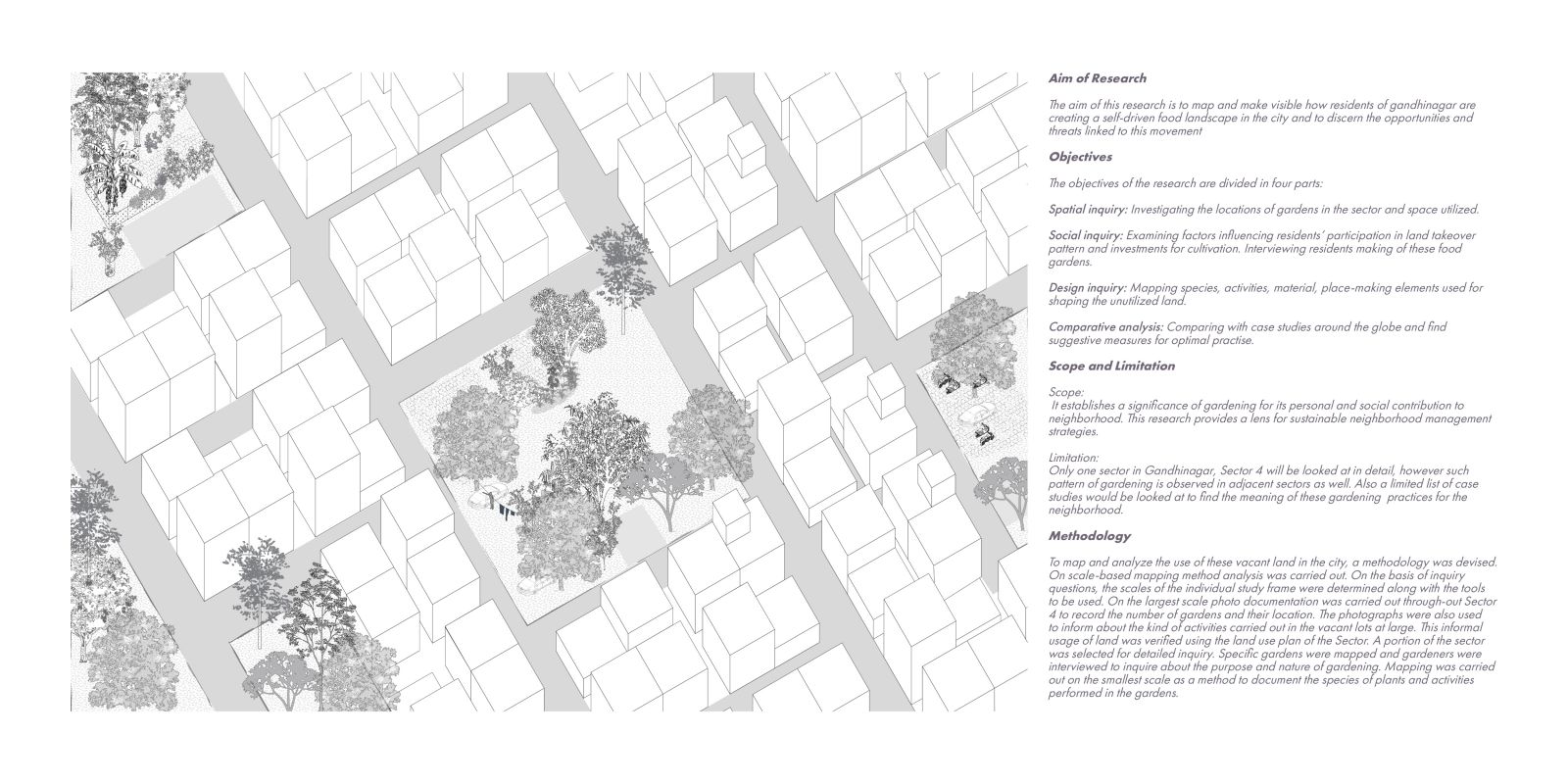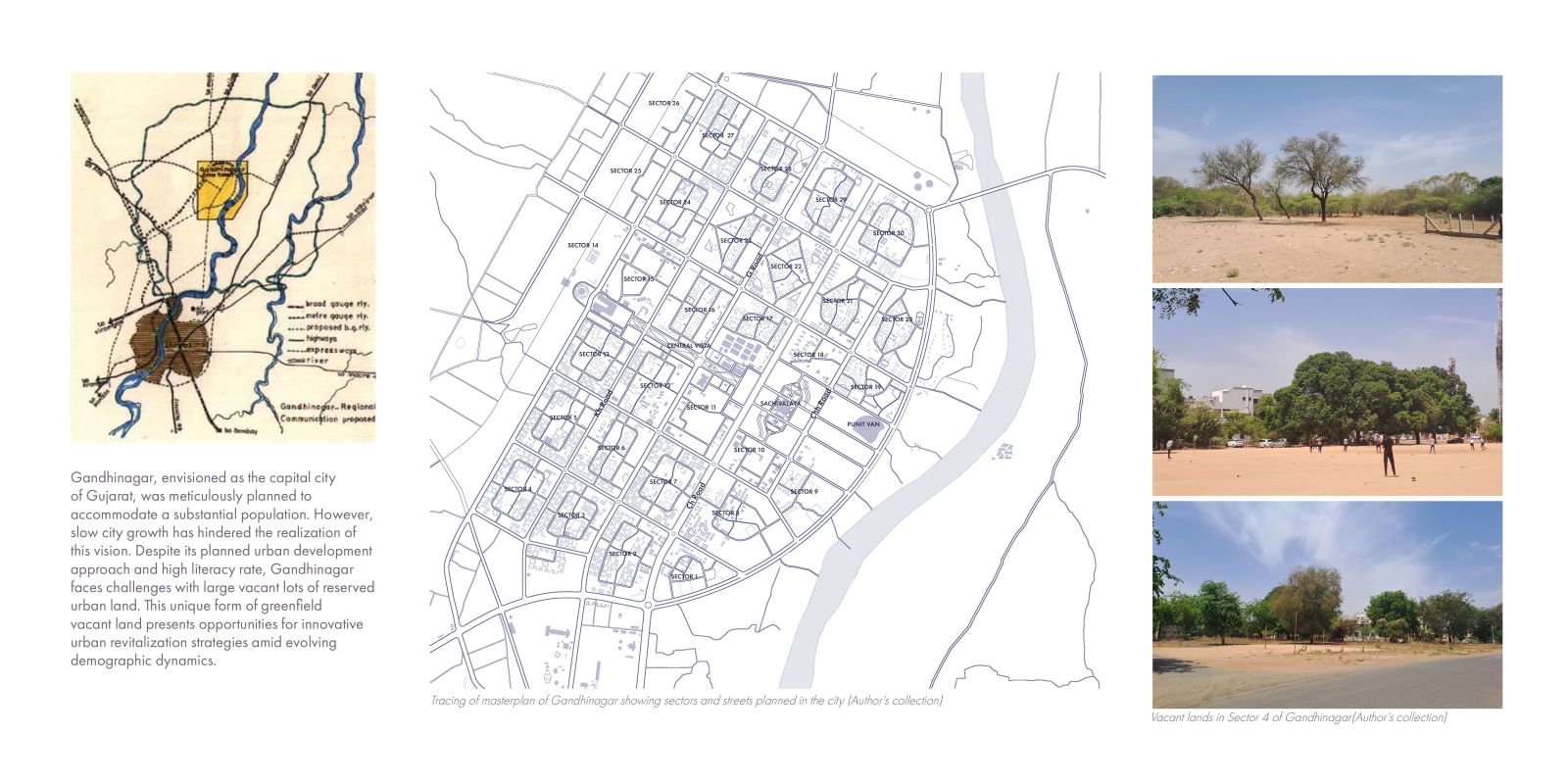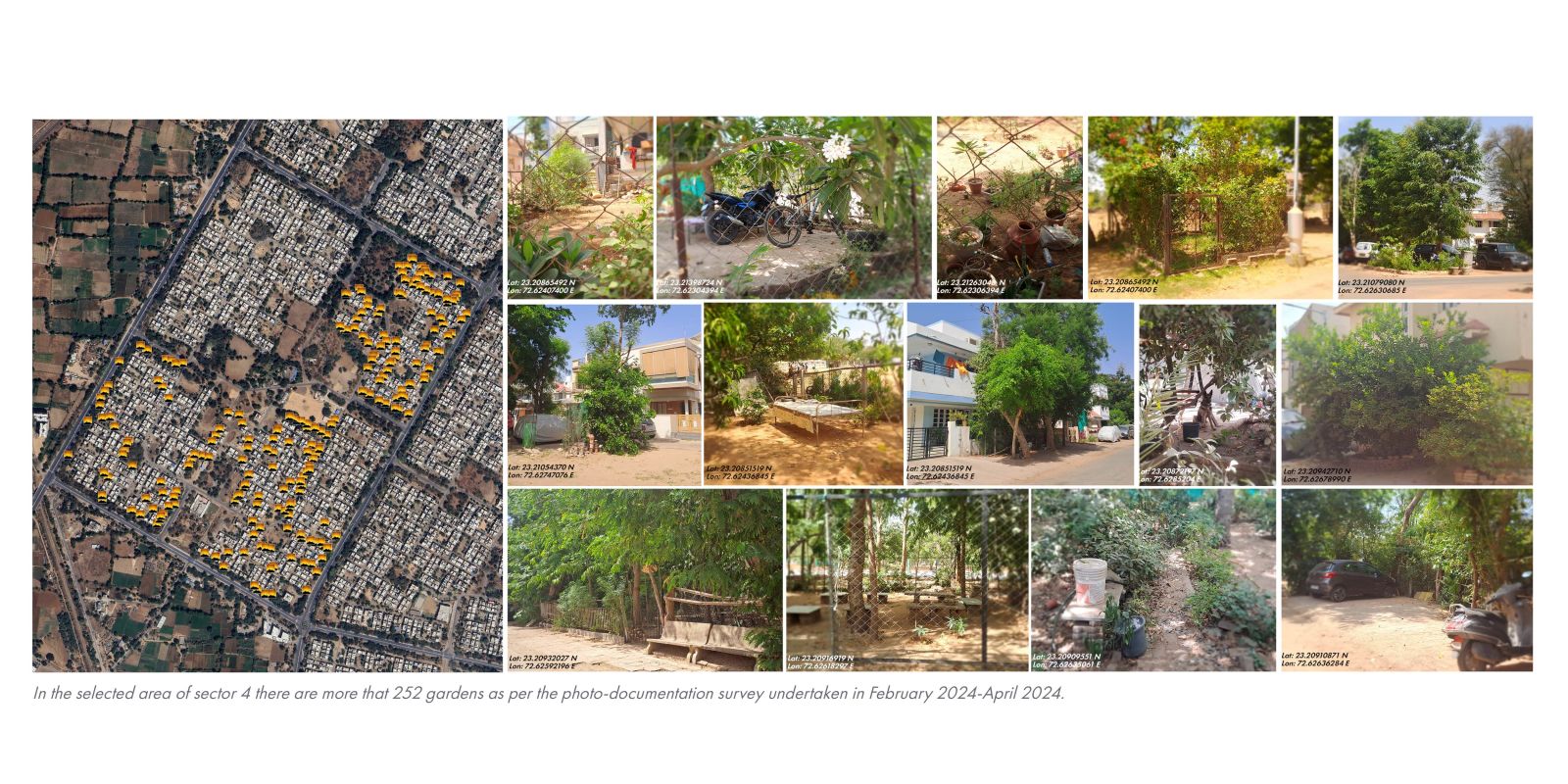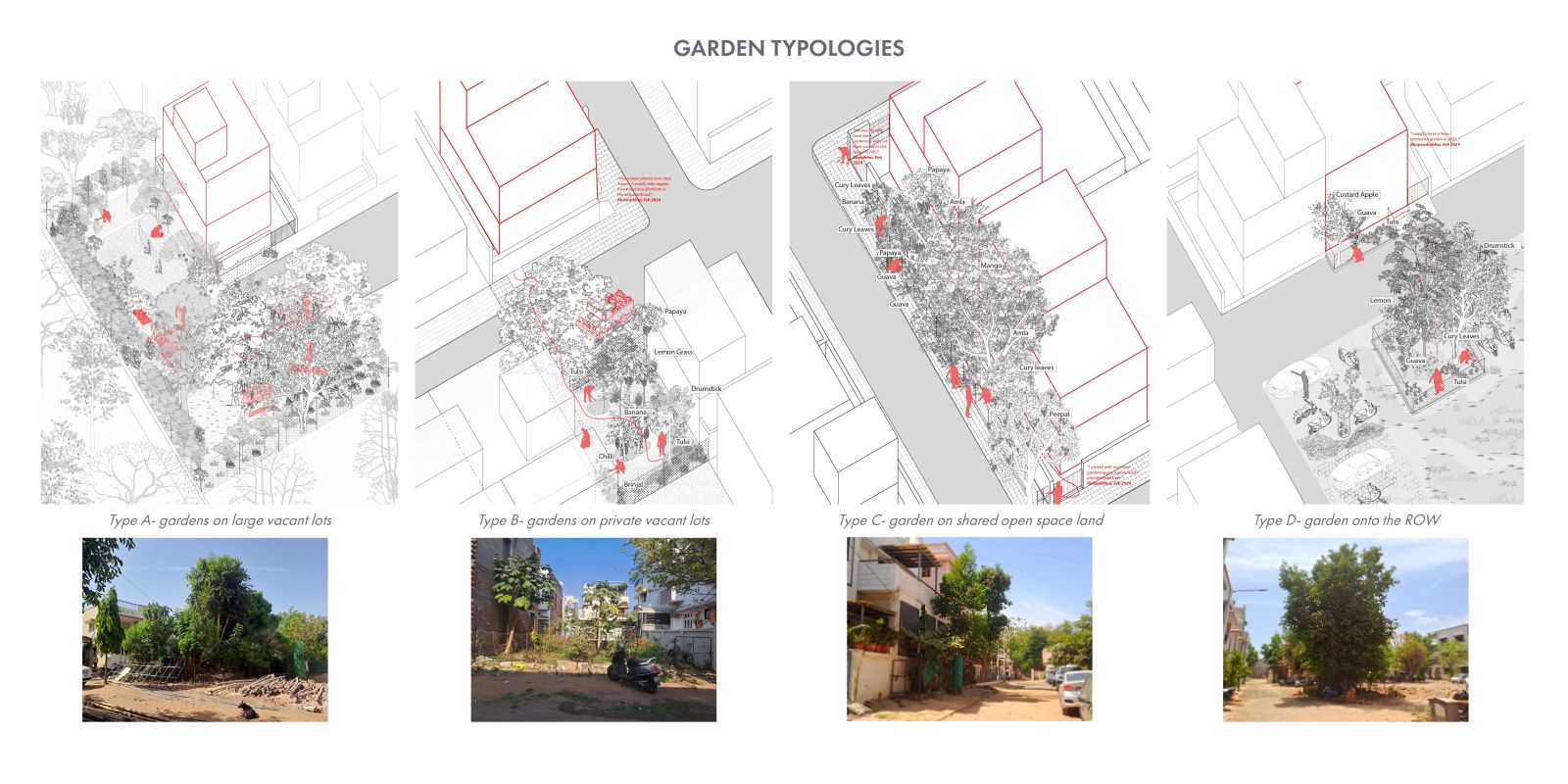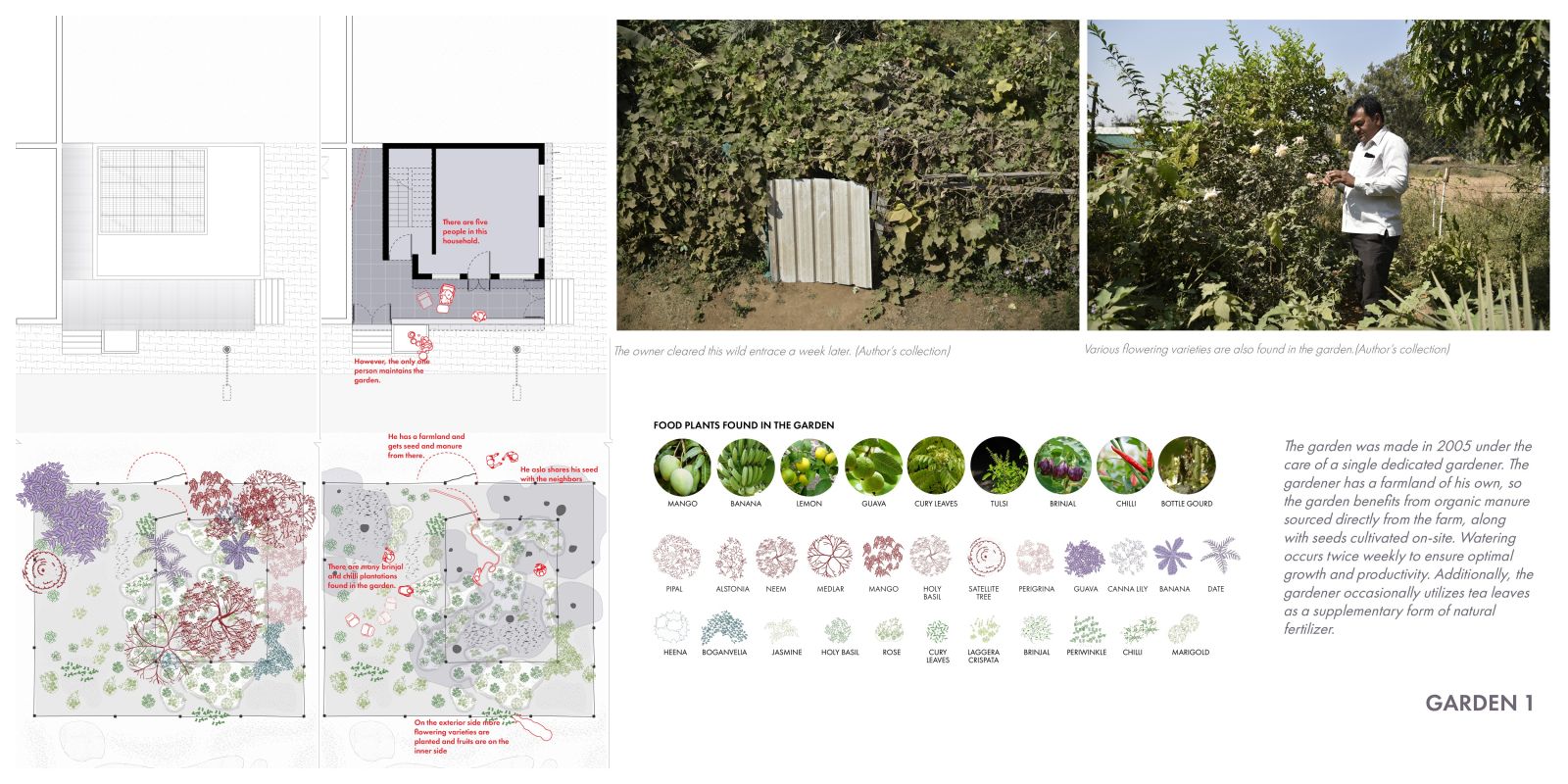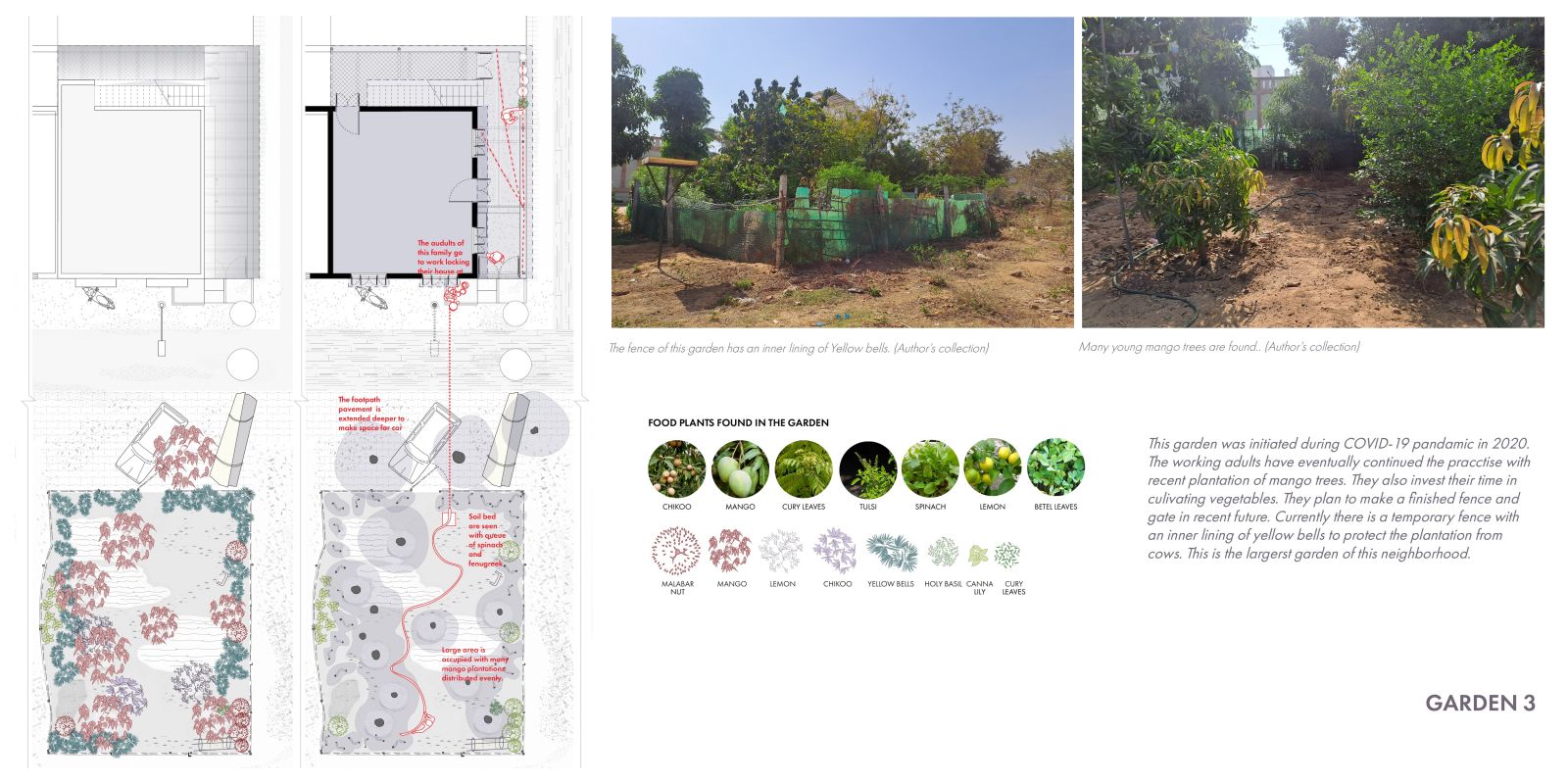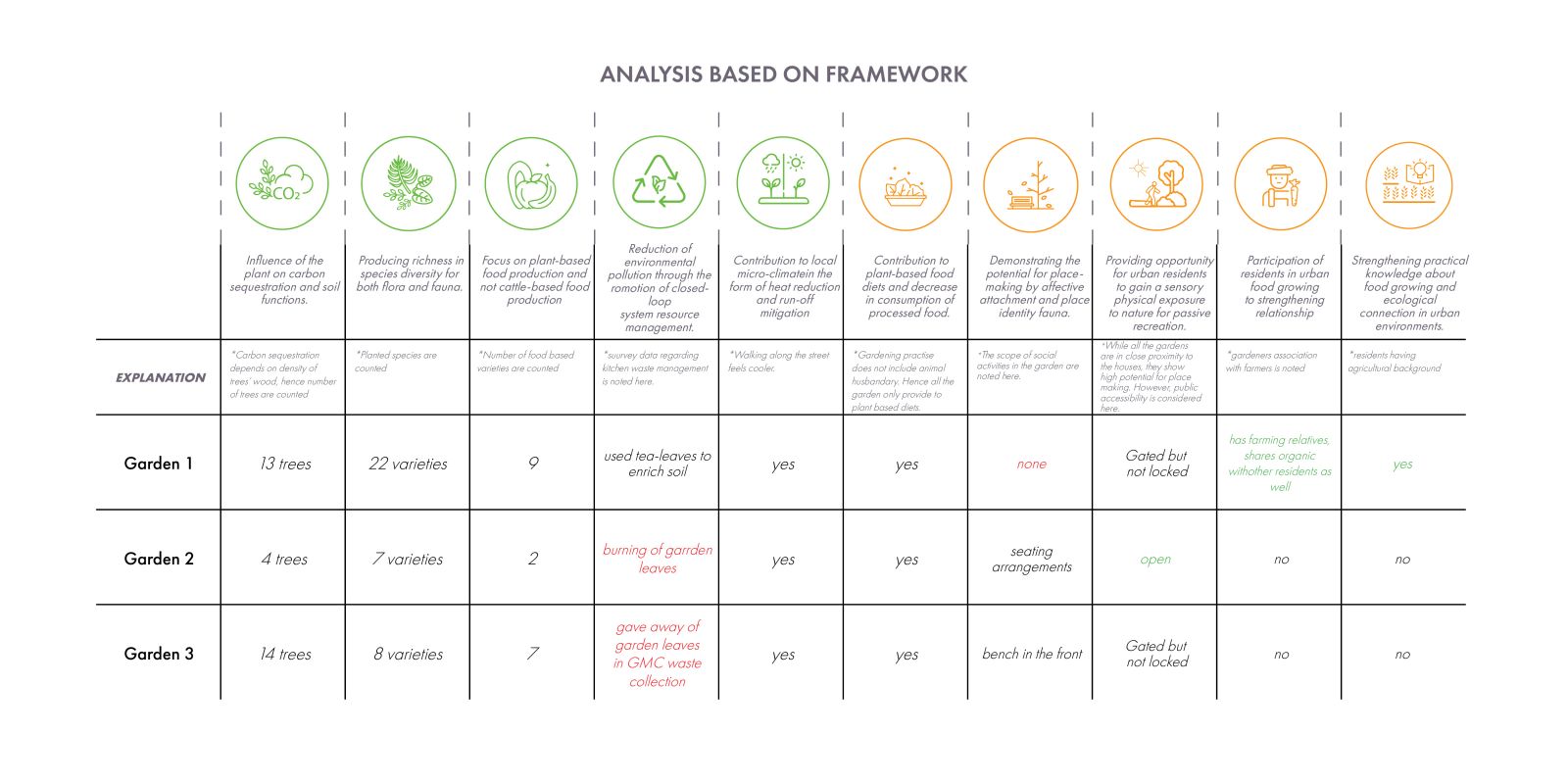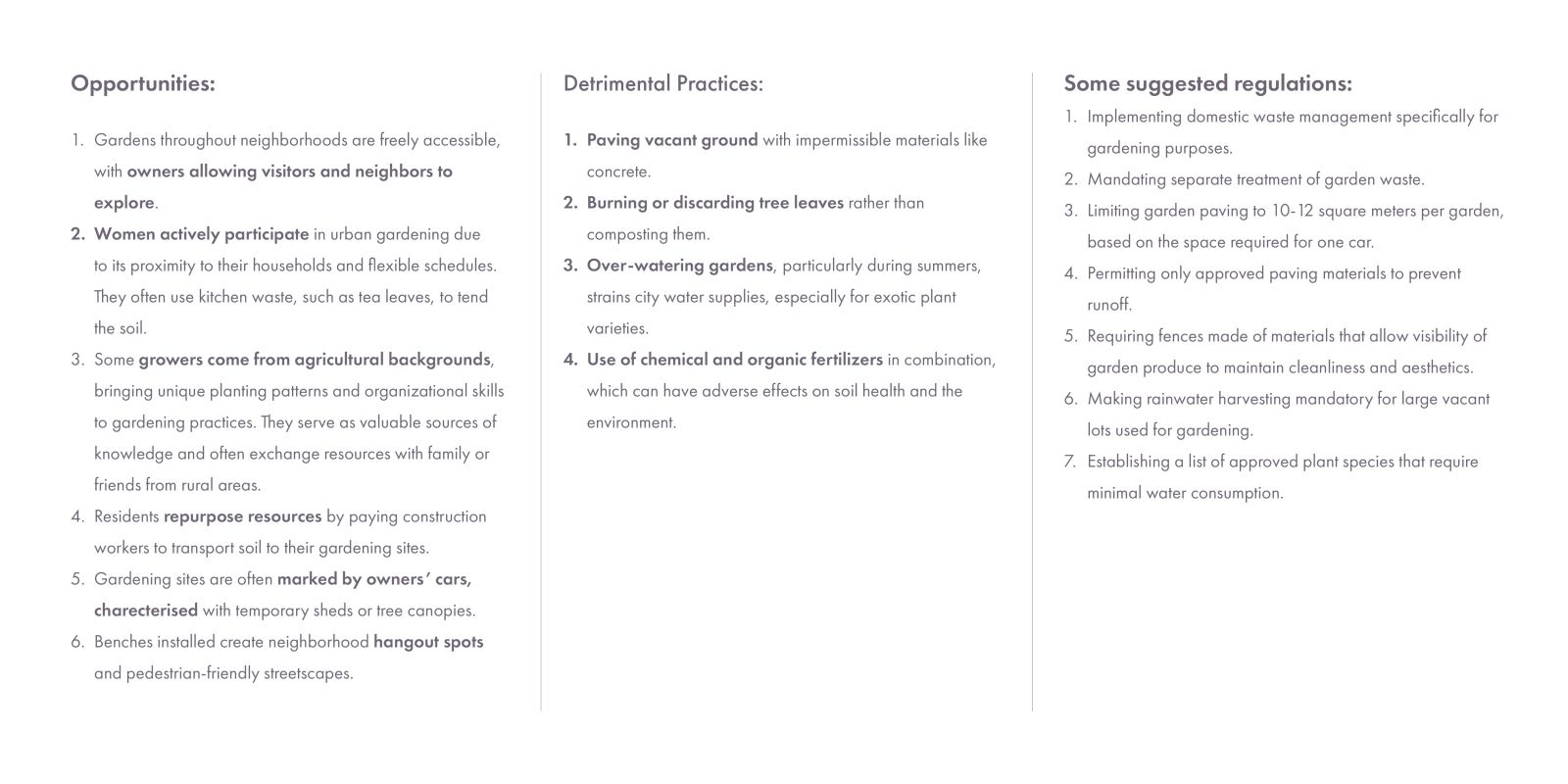Your browser is out-of-date!
For a richer surfing experience on our website, please update your browser. Update my browser now!
For a richer surfing experience on our website, please update your browser. Update my browser now!
Urban Food Gardens. Decoding unique case of underutilized vacant land.
Vacant land in cities, varying in size and
location, results from economic downturns,
land use changes, legal disputes, or
abandonment. In India, these areas often
suffer neglect, becoming sites of overgrowth,
litter, and illegal dumping, contributing to
environmental degradation and community
concerns. Efforts to repurpose or redevelop
them aim to revitalize neighbourhoods, promote
economic development, and create green
infrastructure.
In Gandhinagar, gardening has emerged
as a significant response to vacant land.
Residents actively engage in clearing,
occupying, and gardening on vacant lands
nearby, using household resources to shape
their landscapes. This practice of gardening
on unused land extends to growing food.
Numerous fruit trees and edibles species are
found in the sectors of Gandhinagar.
This research aims to map these gardens and
their surroundings, providing insights into
the spatial dynamics within the sector. By
observing nearby activities, the study seeks
to analyze the social factors influencing
participation in food cultivation, such as
patterns of land takeover, investment in
plants, and the utilization of these spaces by
residents. Additionally, it will explore how
residents design and organize their gardens,
contributing to the overall built environment.
Mapping the types of plants cultivated and
their impact on local plant diversity will be
crucial aspects of the study. Through interviews
with gardening citizens, the research will
uncover both the opportunities and threats
associated with gardening in Gandhinagar.
The data obtained through mapping will help
position gardening practices and their role
within the urban context of Gandhinagar,
informing policymakers and urban planners
about the city’s evolving landscape. This will
facilitate the development of sustainable,
community-centric urban living policies and
initiatives. DRP Report
